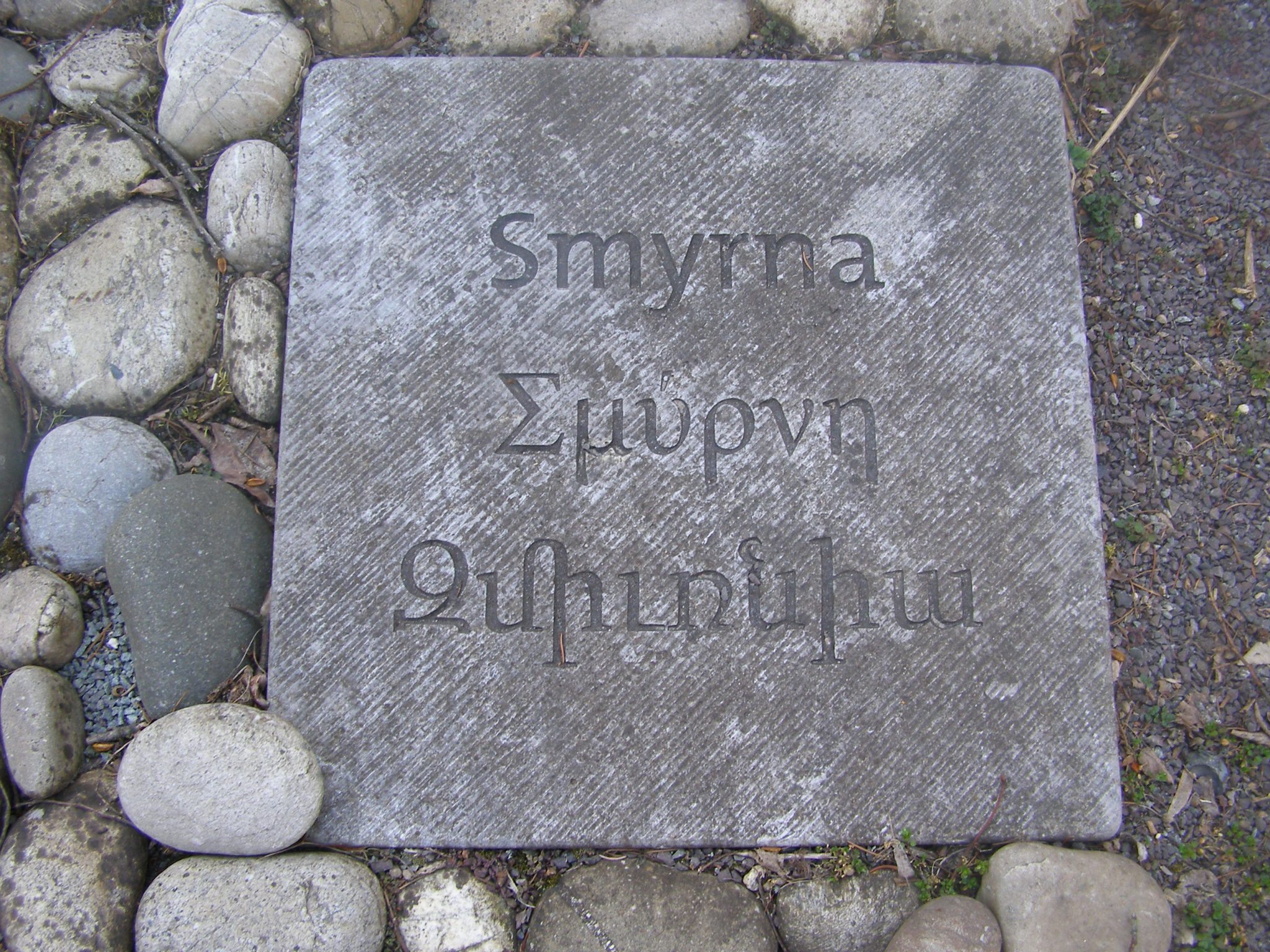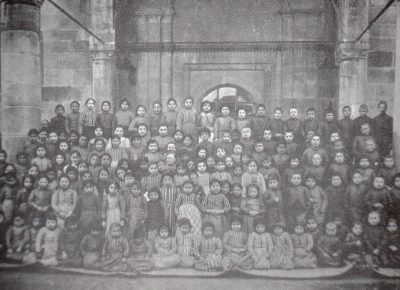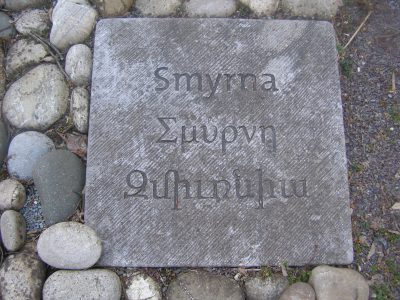
Administration
The sancak comprised the eleven kazas of Smyrna, Pergamon (Trk.: Bergama), Phokaia (Trk.: Foça), Menemen, Çeşme, Sivrihisar, Kuşadası, Tire, Bayındır, Evdemiye, and Vurla (also: Vourla; Urla).
Population

According to American pre-Greco-Turkish War (1919-1922) estimates, the Greek element in Smyrna Sancak counted 375,000 inhabitants and was the most numerous in that administrative unit, while other groups included Muslims (325,000), Jews (40,000, predominantly Sephardic and Romaniote) and Armenians (18,000).[1]
The sancak Smyrna comprised the two Greek Orthodox Dioceses of Smyrna and Çesme (thirty-one communities with a total of 60,496 Greek Orthodox inhabitants)[2].
The 1914 census of the Armenian Patriarchate of Constantinople gave the Armenian population of the sancak of Smyrna as 13,679. The Armenians lived in eight localities and maintained 17 churches.[3]
Destruction
During the First World War, “(…) deportations did not just affect Armenians from Smyrna. In the rest of the sancak, the 1,000 Armenians of Pergamon [Trk.: Bergama] and the 1,500 of Ödemiş, as well as the members of the little colonies of Menemen, Kuşadası, Bayındir, and Söke, were also targeted. The Armenians of Söke, like those of Pergamon, were quietly deported in mid-August 1915, followed by those of Ödemiş in February 1917.”[4]
